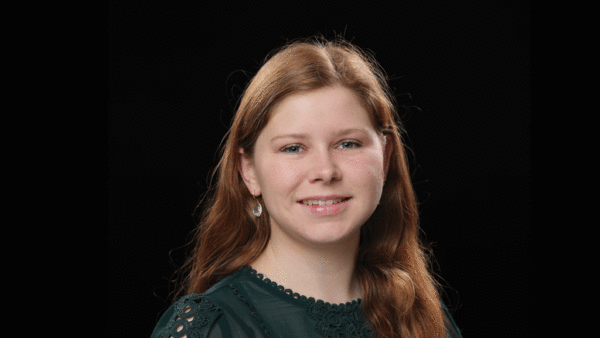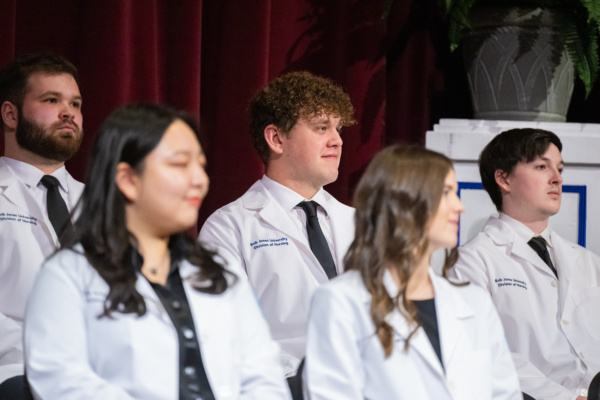GREENVILLE, S.C. (March 1, 2021) – Bob Jones University President Steve Pettit announced today that BJU will begin a phased approach to de-escalate the COVID-19 protocols on its campus beginning March 2.
Since the beginning of February, BJU has experienced a 90% drop in its positivity rate among the campus community. As of Monday, March 1, BJU has three positive student cases and one positive faculty/staff case.
As the president mentioned to the campus community during his announcement, the COVID-19 Task Force, in conjunction with recommendations from the Health and Safety subcommittee, carefully reviewed the data from both symptomatic and asymptomatic testing as well as studies of our campus inoculation rate. Additionally, the task force considered guidance from the Centers for Disease Control and Prevention, South Carolina Department of Health and Environmental Control, state and local government guidelines and data on population health for the greater Greenville community.
BJU’s School of Health Professions faculty and the COVID Task Force developed a tool that functions as a Campus Traffic Light System (CTLS) that accounts for all these data sources and provides us a “stop,” “caution,” or “go” indicator for COVID-19 protocols. The CTLS will assist the task force in making necessary adjustments in real time based on the current data.
Based on our indicators, BJU is now at a green “go” level.
Effective March 2, masking will continue to be required to enter all public buildings but will be voluntary once students are seated. Masks will also be required to enter academic buildings but at the professor’s discretion, masks may be removed once class begins.
In keeping with state guidelines for restaurants, masks will be required to enter the Den and dining common but may be removed while seated. Masks will also need to be worn in the various campus retail establishments such as the Bruins Shop, the University Cleaners and Bellis Copy Center at all times.
The COVID Task Force will continue to meet several times throughout the week and to monitor levels and advise any changes in the CLTS indicator level. Additionally, active COVID cases are reported each Monday, Wednesday and Friday afternoons.
De-escalation Rationale
The de-escalation of campus COVID-19 protocols is based on the careful consideration of the following:
- Data analysis from both symptomatic and asymptomatic COVID-19 testing
- Studies of our campus inoculation rate
- Consideration of CDC, S.C. DHEC, state and local government guidelines
- Data on the population health for the greater Greenville community
- Overall understanding and concerns for the emotional and mental well-being of our campus population
This phased approach is built on a Campus Traffic Light System (CTLS) that accounts for these data points and provides us a “red, yellow, green light,” which means a “stop, caution, go” indicator for COVID-19 protocols.
This approach provides a way to make necessary adjustments in real time based upon the data that we are receiving. We began the semester with a “red” light, and today the data shows we can go “green.”
Based on the following data, the Health and Safety subcommittee of the COVID-19 Task Force is recommending moving from mandatory masking to voluntary masking in a graduated way.
Background Information
Two scenarios: 10% asymptomatic and non-reported cases for both students and faculty/staff (conservative hypothesis) and a 20% scenario (realistic hypothesis).
Three indicators were evaluated: the risk for campus to be “inoculated” as measured by the prevalence in Greenville combined with the prevalence of COVID-19 in our day student population (Indicator 1). The active circulation of the virus on campus measured by the 10–14-day cumulative incidence (Indicator 2), and the state of herd immunity as measured by the percentage of recovered individuals in the BJU community (Indicator 3). We supposed an eight to nine-month immunity which is consistent with current research.
The color system goes from green, yellow, orange to red. Red is the worst-case scenario. Each indicator takes a value between zero and one.
For Indicator 1:
Two weeks ago, BJU was orange (moderate risk with a value of 54%). As of today, we are olive green (low risk of inoculation) with a value of 29%.
For Indicator 2:
That indicator is at 1% and is solid green (very low circulation of the virus on campus). The Centers for Disease Control and Prevention’s green is at <4%.
For Indicator 3:
In the 10% asymptomatic and non-reported scenario, this indicator would be at 34% which is orange: moderate chance of herd immunity.
In the 20% scenario it turns from yellow to olive green: herd immunity is at 44% which is a likelihood of global protection.
Interestingly, when we focus only on the most at-risk population — our faculty/staff — the recovered percentage fluctuates between 45% and 55% without including those who have been vaccinated.
Total color of the system:
Overall, the indicators are green. It’s safe and reasonable to start the de-escalation process at least with the student body. Options for de-escalation could be transitioning from mandatory four W’s to voluntary with active surveillance testing and contact tracing, especially in campus settings that have high recovery percentages or low risks. Surveillance testing can also put an emphasis on day students.
Our testing center returned the following report for the week ended 02/26/2021:
“After testing 311 individuals this week we are 100% negative. BJU did not see an influx in symptomatic individuals after Bible Conference, and a week after Bible Conference we had the quietest days we have had in a long time.”
Student Health Services returned the following report for the week ended 02/26/2021:
TOTAL POSITIVE STUDENT CASES BY MONTH (includes graduate assistants)
- August: 3
- September: 8
- October: 75
- November: 54
- January: 89
- February: 29
POSITIVITY RATE ON SYMPTOMATIC STUDENTS TESTED IN FEBRUARY BY WEEK
These were students that had symptoms, moved into isolation on campus or stayed at home, and were tested mainly by Prisma Health.
- February 2: 45% positivity
- February 9: 20.9% positivity
- February 16: 9% positivity
- February 23–25: 4.5% positivity
It is time for us to make a comprehensive adjustment to our overall approach to campus health that considers both the risk of COVID-19 and the residual risk to overall wellbeing of universal masking. It was recommend that the University remove the mandatory masking requirement and expand surveillance testing so that the “traffic light” monitoring and communication plan is timely, accurate, comprehensive and allows for flexibility in responding to new data in real time. It is also essential that BJU heightens the emphasis on the other three W’s. There will be a greater need to practice safe physical distancing/spacing, enhanced cleaning, and personal hygiene as continued mitigation steps.








